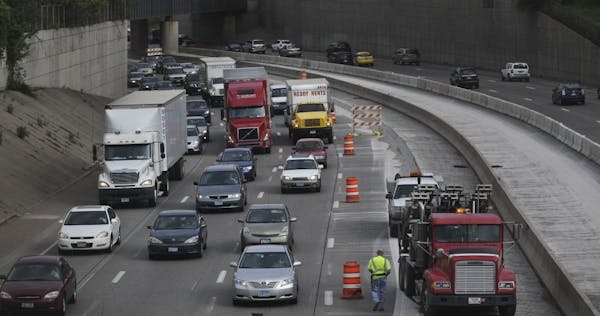We are creatures of habit. So what happens when our driving habits are thwarted?
Apparently, we learn new habits.
David Levinson works in the department of civil engineering at the University of Minnesota, so he pays attention to such behavior. The Interstate 35 bridge failure offered an unexpected opportunity to study drivers.
Before the collapse, the bridge handled 140,000 crossings each day, he said.
"After the collapse, we counted traffic on other bridges and were at about 90,000," he said. "So 50,000 people decided they didn't need to cross the river anymore."
Levinson said that an industry rule-of-thumb is that one-third of drivers will take an offered detour, while others will seek their own routes or change their routines.
Once the new bridge opened, "a lot of people didn't switch back, either because their new route was maybe as good, or they'd just developed a new habit," he said.
People don't always take the shortest path somewhere, he added, which helps explain those who veer out of a traffic jam onto side streets in search of a route that, even though longer, lets them keep moving.
"It's what I call the illusion of motion," Levinson said.
So what's worse? Winter or road construction? It depends.
"In the case of winter, everyone is affected, but for a short duration until the roads are cleared," Levinson said. "Road projects affect a small amount of people, but for a long time."
Bottom line: "People are happy when the road is fixed," he said. "I don't know how happy they are that the road is being fixed."
Kim Ode

Minnesota Sports Hall of Fame: A class-by-class list of all members

This retired journalist changed professional wrestling from Mankato

